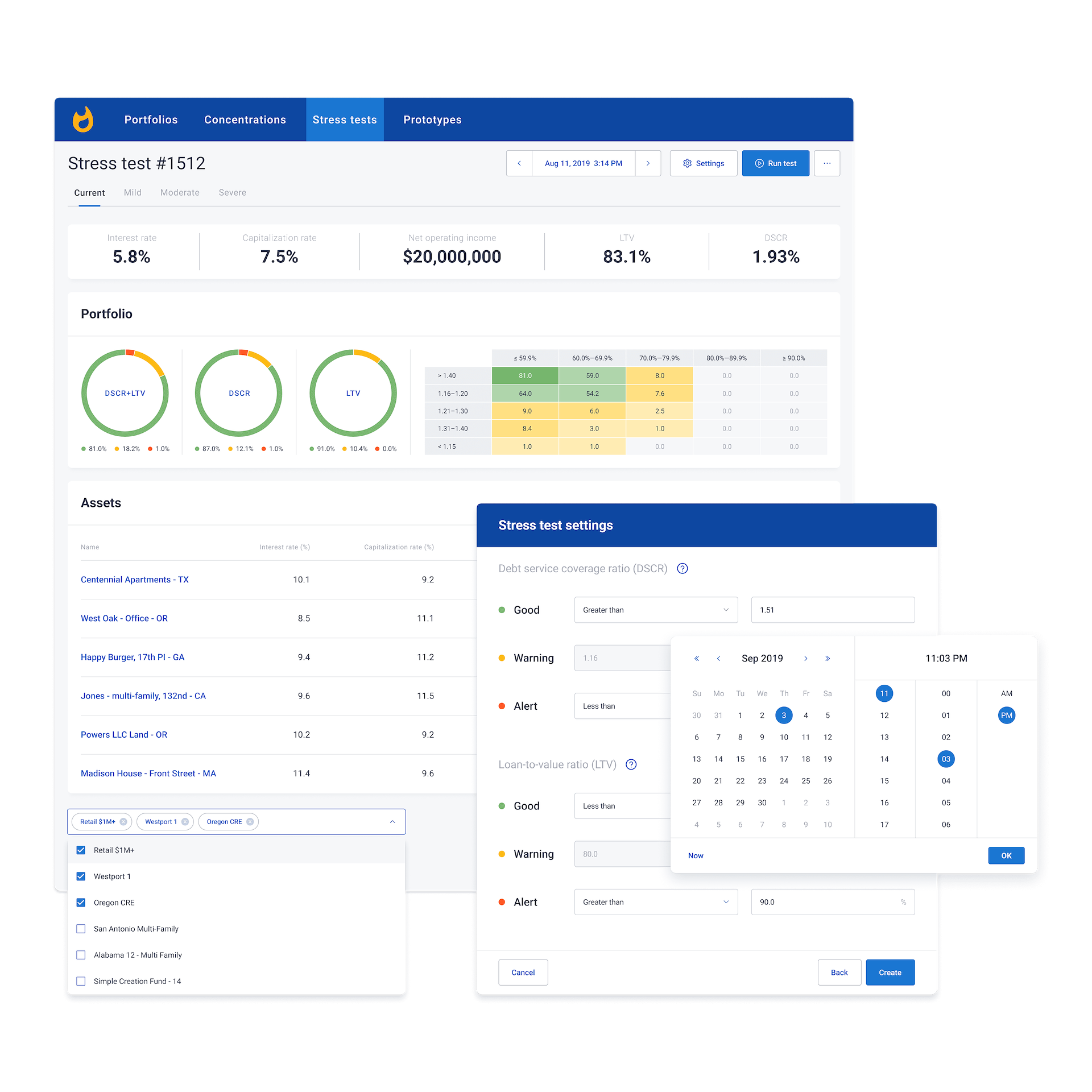Product area
— Financial service
— Regulatory compliance
— Data analytics
Team composition
— Senior product designer (me)
— Product manager
— Business analyst
— Full-stack developer
- — QA engineer
My contribution
— User research and analysis
— Wireframing and prototyping
— Interaction and visual design
- — Usability testing
Duration
Jul, 2019 — Jan, 2020 (5 months)

Background
Loan portfolio analysis is a core part of commercial real estate lending. Our company built a financial software platform to help CRE lenders work more efficiently. Even though the platform was successful, users and market research showed a need for a better tool: a real-time stress testing module that could give detailed insights and help with regulatory requirements.
The existing platform was solid but limited. Users spent too much time on stress tests and struggled with compliance because the data visualization tools were not intuitive. This pointed to the need for a new module that could integrate with the current platform, provide more functionality, and improve the overall experience.
Challenges
The main challenge was to create a module that could handle real-time, detailed stress testing while fitting smoothly into the existing platform. Users needed something fast, easy to use, and intuitive. Before, stress tests took about 7 hours, satisfaction was at 65, and reporting errors hit 10%.
A high number of support tickets showed clear usability problems. The design team had to focus on these pain points and provide advanced visualization tools that made complex data easier to understand.
Achievements
We built and launched the real-time stress testing module using a user-centered approach. Interviews, surveys, and usability tests guided every decision.
The new module cut stress test time from 7 to 4 hours, improving efficiency by 40%. Satisfaction scores went up from 65 to 85. Reporting errors dropped from 10% to 7%, improving compliance. Adoption was strong—over 80% of users were regularly using the module within the first three months.